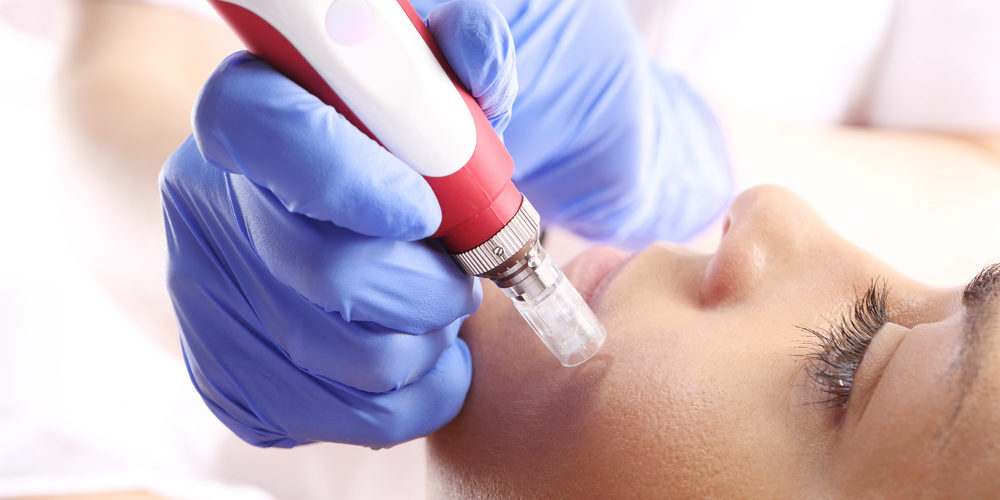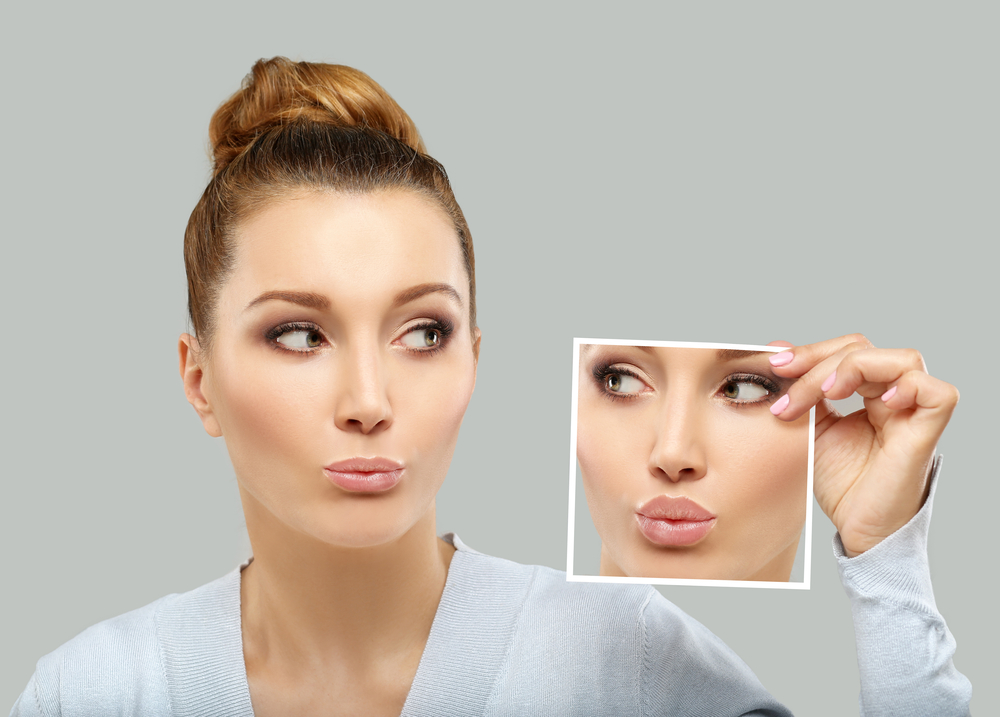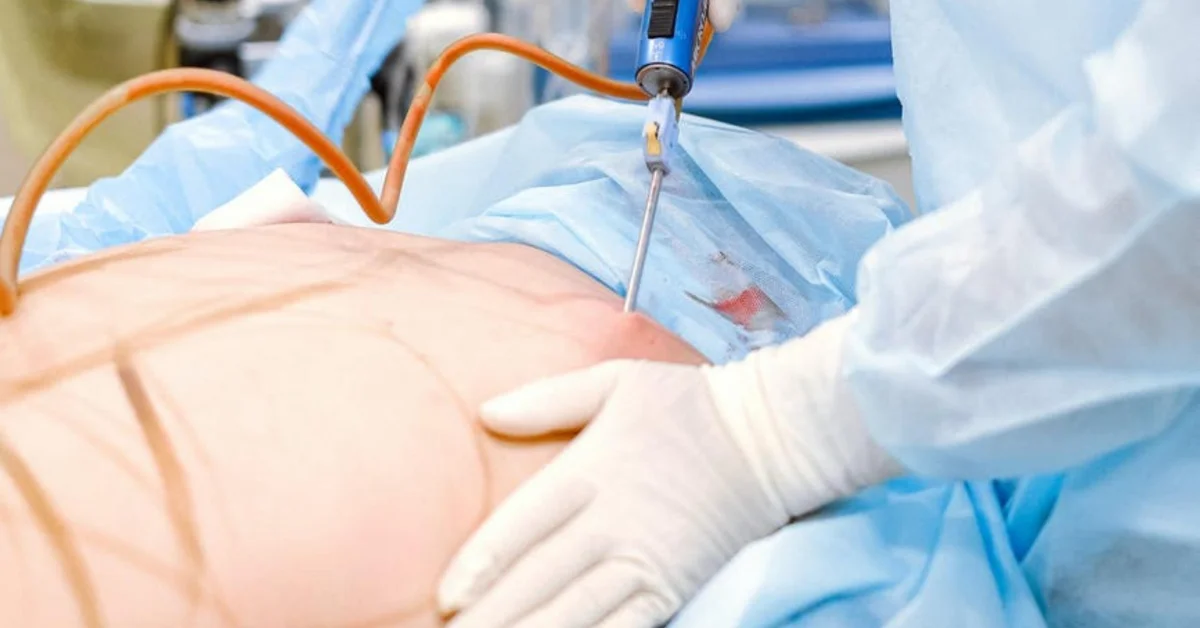- Everyone ages differently but certain patterns do emerge by decade.
- Visible signs of aging generally begin to manifest in your thirties.
- Minimally invasive treatments can make it possible to put off surgery for many years.
Understanding exactly how the face changes with age can help you determine what issues need to be addressed and which treatments will be most effective.
We spoke with three experts to gain their insight into the subtle markers of facial aging — decade by decade. Depending on which decade you fall into, here’s what can be done to slow down or turn back the hands of time.
How the face ages
The aging process involves both intrinsic and extrinsic influences.
- Intrinsic (cellular and genetic) aging begins in our twenties as the production of collagen decreases, eventually leading to a loss in skin elasticity. Cellular turnover also gradually slows, leading to duller-looking skin.
- Extrinsic aging encompasses environmental and lifestyle-related factors, including diet, alcohol consumption, smoking and sun exposure — all of which speed up the aging process.
It’s important to understand that everyone experiences these aspects of aging differently. “Chronological age and physical age occur at different rates and vary from individual to individual,” explains New Jersey plastic and reconstructive surgeon Dr. Thaddeus Boucree.
“This is because physical aging is largely based on hereditary factors,” Boucree adds. “Factors such as ultraviolet radiation, smoking, heavy drinking and substance abuse manifest in the skin as wrinkles. These physical changes to the ‘scaffolding’ in the face result in skin laxity.”
On the flipside, there are steps you can take to avoid these aging influences. Be proactive and develop healthy habits, such as drinking enough water and wearing sunscreen, to help maintain your youthful look.
Signs of aging in our twenties
When it comes to aging, our twenties are the glory years — you really shouldn’t notice much aging.
“When we are in our teens, twenties and early thirties, our faces show the glow of youth,” notes Dr. William H. Truswell, current President of the American Academy of Facial Plastic and Reconstructive Surgery (AAFPRS).
“The surface of our skin, the stratum, is a layer of dead cells,” Truswell explains. “In those years, whenever we wash our faces, we shed those cells and retain that glow. When we move from 20 to 30, very little happens to our faces. At 30 we pretty much look like we did ten years earlier.”
However, towards the end of your twenties your skin may begin to look slightly duller than it used to, and you may start to notice early signs of sun damage, including wrinkles, enlarged pores and sun spots.
Recommended treatments
“To deal with dullness, mild blemishes, dark spots and enlarged pores, I recommend starting with a light laser resurfacing treatment to improve skin texture and tone, such as a light Halo or Clear and Brilliant laser every 3-4 months,” says Dr. Melissa Kanchanapoomi Levin, a dermatologist at Mount Sinai Hospital and clinical instructor at NYU.
“To further boost collagen formation, I also recommend microneedling treatments to keep your fibroblasts in check,” notes Levin.
She also recommends daily use of sunscreen and a nightly retinol or retinoid for what some call ‘prejuvenation.’ For early changes, such as dullness and sun damage, Truswell recommends light chemical peels and microdermabrasion.
Signs of aging in our thirties
In our thirties, we see more signs of dull skin and a little bit of looseness at the jaw line.
“As we pass through our later thirties, the stratum skin layer becomes more adherent,” Truswell explains. “[Dead cells] pile up and the skin looks dull. These cells are within the pores,” he notes. As dead cells become visible, lines, brown spots and red patches begin to form as well.
According to Levin, additional signs of aging that we can expect to see in our thirties include wrinkles, volume loss, bags under the eyes, more prominent nasolabial folds (laugh lines), jowling and uneven pigmentation.
“I always say that life starts to show up on our face and skin in our thirties,” she notes.
Recommended treatments
Levin recommends neuromodulator injections (Botox, Dysport, Xeomin) every 3-4 months to soften forehead and frown lines.
For pronounced wrinkles and sun damage, Truswell recommends medium-depth chemical peels, photo therapy (IPL) and CO2 laser facials. Levin, too, is a proponent of laser and IPL treatments as well as broadband light (BBL by Sciton) to address uneven skin tone and treat broken capillaries, blotchy red patches, brown spots and yellow pigment.
“My favorite treatment is the combination of BBL with Halo by Sciton,” admits Levin. “Halo is the first hybrid fractional laser resurfacing device that combines both ablative and non-ablative resurfacing treatments with two different wavelengths in one laser,” she explains.
According to Levin, Halo can be tailored to a specific condition or patient need, and achieve the same results as more invasive ablative lasers but with less downtime and fewer treatments.
Signs of aging in our forties
“Passing through our forties, things begin to descend, the jaw line slackens and jowls sag downward,” notes Truswell.
Signs of aging at this stage may include a ‘turkey wattle’ in the neck, loosening and hanging of the upper lids, fat bags pushing forward in the lower lids, descending eyebrows and further signs of dull skin.
Levin notes that we also begin to lose even more subcutaneous fat in our forties. “I tell my patients all the time, ‘Baby fat is real!’ While there is variation in genetics, environmental exposure and lifestyle behaviors, the first place we tend to lose fat is in our mid-face, temples and cheeks in front of the ears.”
Recommended treatments
A turkey wattle can be corrected through a neck lift procedure. However, many patients wait until they are in their fifties to have this done.
Aging in the eyelids and eyebrows can be addressed through blepharoplasty (eyelid surgery) and brow lifts, respectively.
Loss of subcutaneous fat can be disguised using injectable fillers. “In order to restore fullness, fillers are really the best non-invasive option,” explains Levin. “We live in a time with many different dermal filler options and — in the hands of a skilled and trusted dermatologist or plastic surgeon — fillers allow us to create a natural and rejuvenated appearance without looking ‘done.’”
Signs of aging in our fifties
“As more decades pass us by, we lose volume in the muscles and soft tissues of the face,” says Truswell. “The bony skeleton also undergoes changes. While everyone ages at a different rate and outside factors do contribute to the process (sun exposure, tobacco use, illness), as we move through the decades of life, facial changes accelerate more and more.”
According to Levin, this is when skin laxity, loss of collagen and elastin and increasing resorption of bone really start to show in the face and neck. Women lose about one-third of their collagen in the first five years of menopause, causing the skin to become drier, looser and more susceptible to inflammation, sun damage and stressors, such as pollution and underlying health issues.
Recommended treatments
“To address skin laxity, ultrasound-based or radiofrequency machines can stimulate collagen and elastin formation by stimulating fibroblasts and tightening skin in areas such as the brow, neck, chest, knees and jawline,” says Levin.
Ultherapy, which utilizes ultrasound energy, has the added benefit of creating pockets of micro-focused heat energy as deep as the muscle for further tightening beyond the skin alone. In addition to these devices, Levin recommends neuromodulator and dermal filler injections in the jawline and neck to minimize jaw laxity.
“Botox and Dysport can soften the platysmal muscle, which becomes more noticeable with age and contributes to neck laxity,” she explains.
Depending on the severity of sun damage, either a more aggressive fractional laser resurfacing treatment such as Halo or a fully ablative erbium or CO2 laser resurfacing treatment can significantly improve crepey skin and deep-set wrinkles, particularly around the mouth and eyes.
Your fifties may also be the time to start considering plastic surgery procedures, if you are experiencing more pronounced aging.
“As the soft tissues of the face descend they can be repositioned with various surgical lifting procedures depending on the degree of descent,” says Truswell. “These may include one of the facelift procedures or neck lift, for example. Excess skin and fat bulges in the eyelids can be treated through blepharoplasty,” he suggests.
Beyond your fifties
The same signs of aging mentioned earlier become more pronounced as more time passes. Many of the same treatments our experts recommend for patients in their fifties are also effective for older patients.
However, everyone ages at a different pace, so it’s best to consult an expert to determine what treatments will work best for your specific skin needs.
» Schedule a consultation with a board certified dermatologist, plastic surgeon or facial plastic surgeon in your area to learn more.









